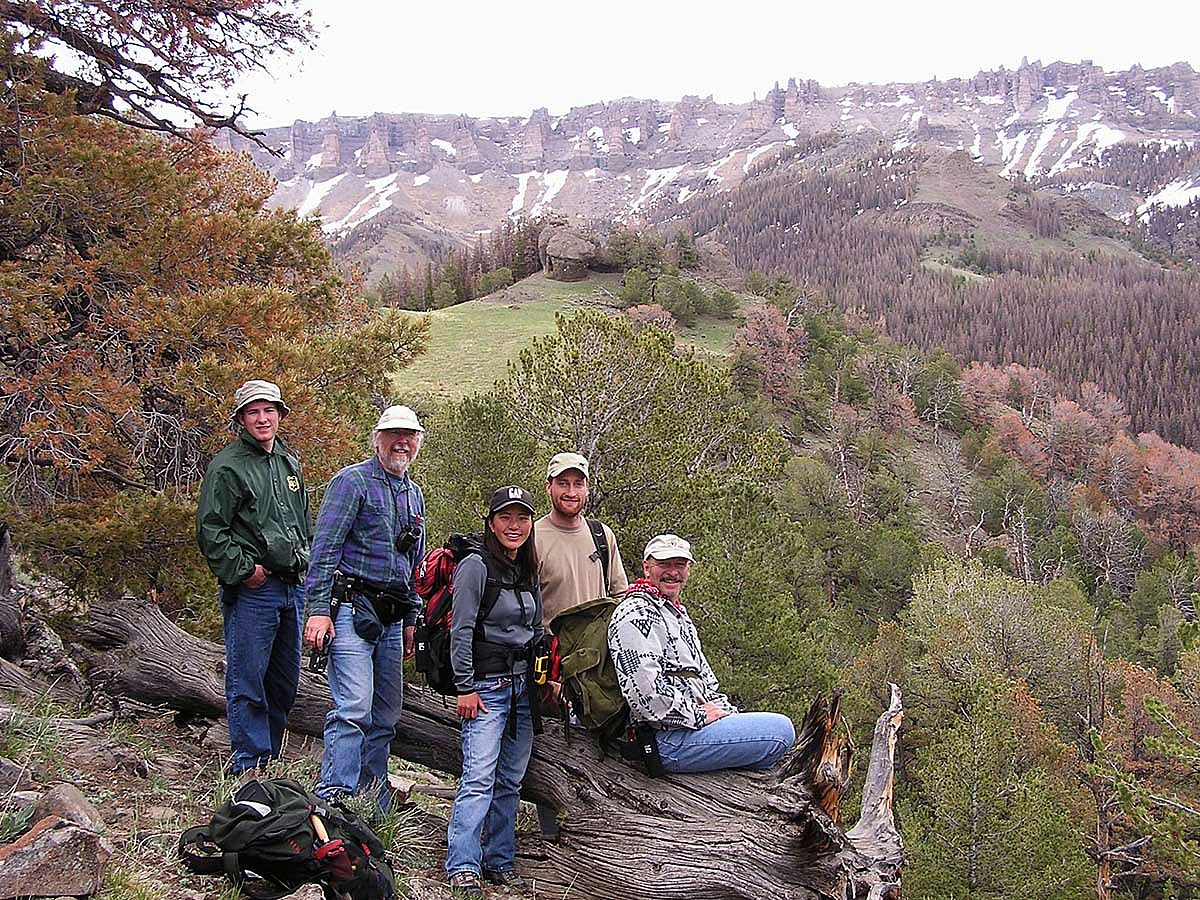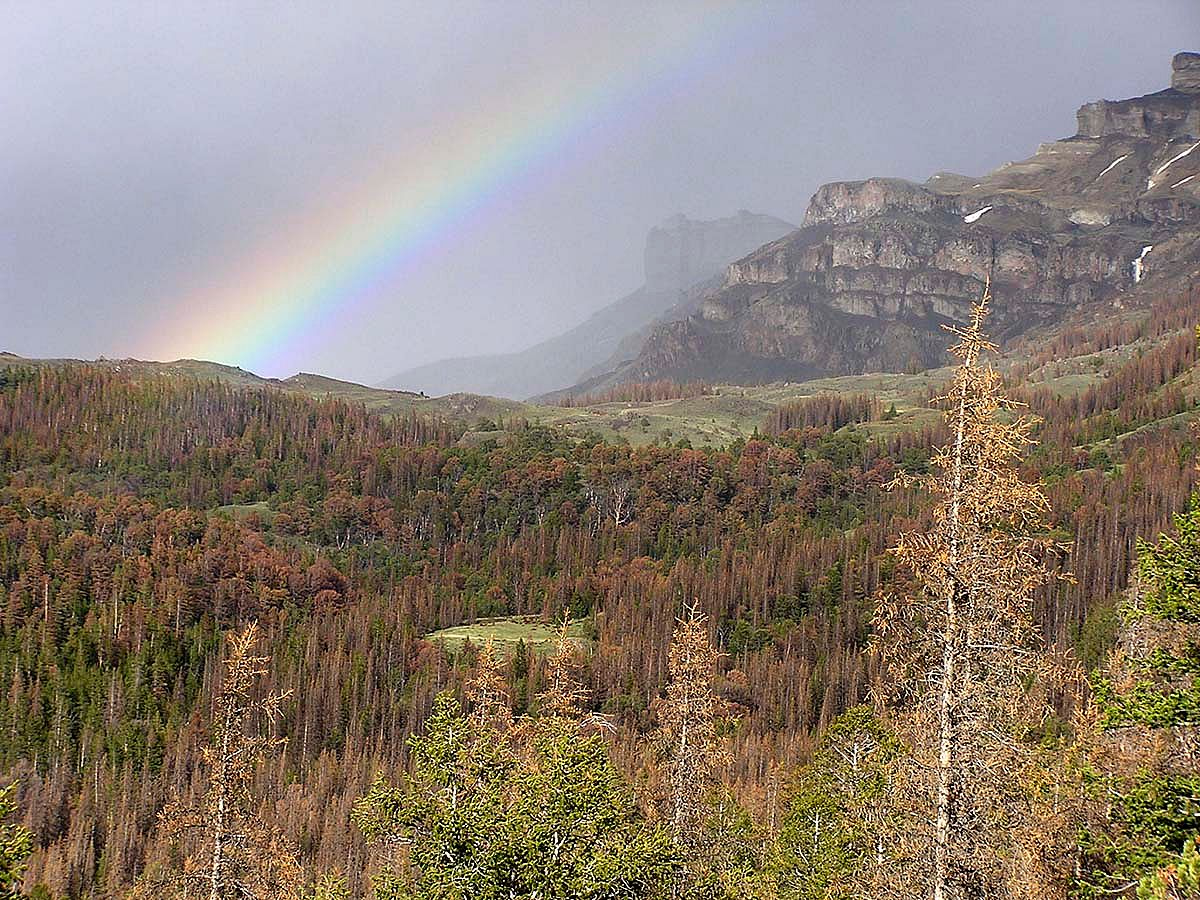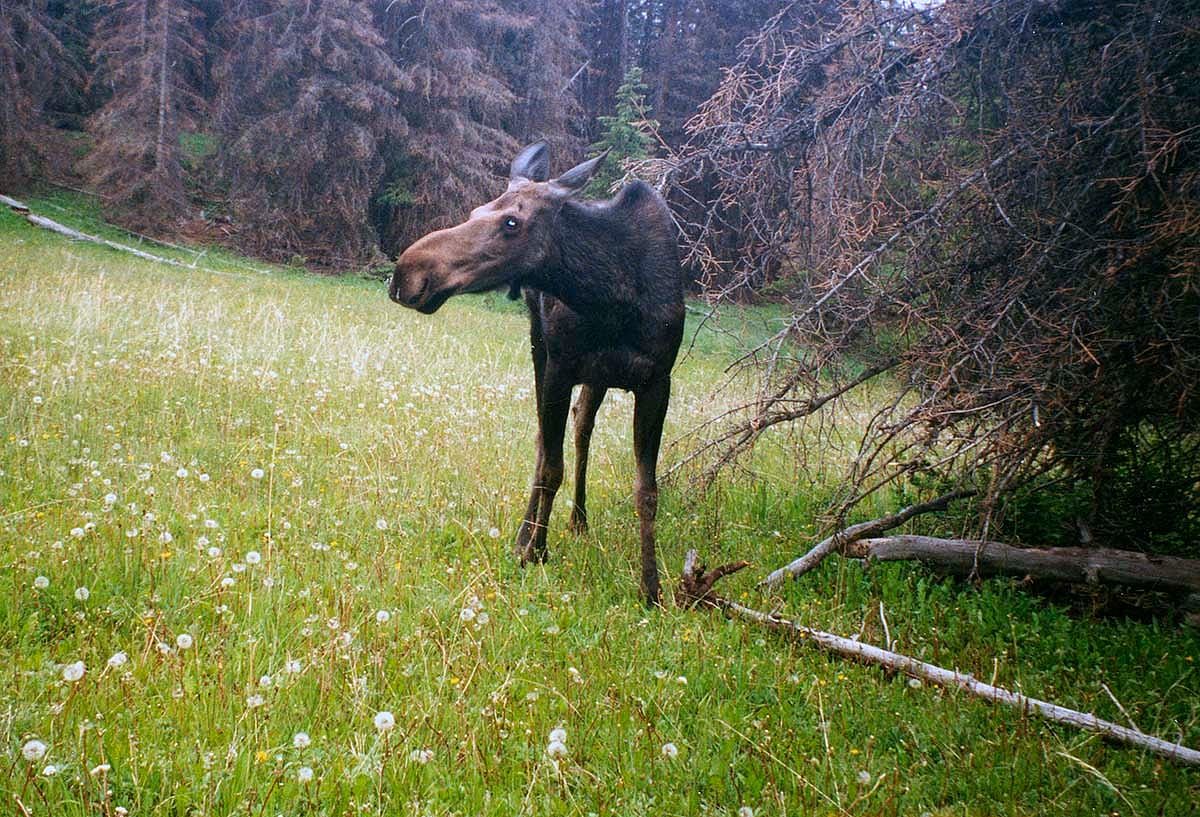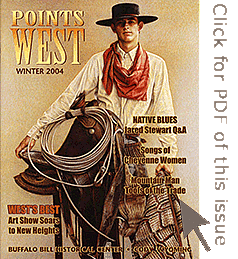
Field Expedition Probes Ecosystem Dynamics – Points West Online
Originally published in Points West magazine
Winter 2004
Yellowstone Corner: Field Expedition Probes Ecosystem Dynamics
Ed. note: Our own Chuck Preston, Willis McDonald IV Senior Curator of Natural Science and Founding Curator of the Draper Natural History Museum, retired from those roles at the end of December 2018. In looking back at his 20 years at the Center, Chuck sited leading field trips into the Greater Yellowstone as one of the parts of his job that stand out in his memories. Here’s a look back to one of those trips in 2004.
By Charles R. Preston, PhD
How does a massive infestation of bark beetles affect wildlife in the Greater Yellowstone Area? How does wildlife respond when a stand of beetle-killed forest is cut and removed? How does the forest recover after logging for sanitation or salvage, and how does that compare to forest recovery after a fire or other disturbance? What are the implications of these events for multiple use by humans?
The staff research associates, and student-interns of the Draper Natural History Museum are working to answer those questions and more as part of a long-term study conducted on Carter Mountain in the Shoshone National Forest near Cody, Wyoming.

The overarching goals of this project in forest ecosystem dynamics are to compare yearly changes in habitat structure and wildlife communities among beetle-infested forest sites subjected to different management treatments (including no treatment). The first two years of fieldwork were supported by the U.S. Forest Service, Roy A. Hunt Foundation, and Earth Friends Wildlife Foundation.
We began by consulting timber management specialist Dennis Eckardt and wildlife biologist Lynette Otto of the U.S. Forest Service. We scouted for study sites in 2003 and began fieldwork in May 2004. The field crew included plant ecologist John Campbell, PhD, of Northwest College and zoologist Ron Hitchcock, PhD, along with student-interns Ayako Yamamoto and Ronnie Hegemann. Lynette Otto and other Forest Service personnel and interns occasionally joined our core crew to help with field logistics and data collection.
Our specific objectives in summer 2004 were to measure forest stand characteristics and determine the presence, distribution, and relative abundance of bird and mammal species in selected study sites prior to any logging, prescribed burns, or other management treatments.

We sampled breeding bird populations with early morning, standardized visual and auditory surveys in addition to field identifications, we used a newly developed omnidirectional microphone and digital recording system to provide a permanent record of our surveys. These recordings will be catalogued into the collections of the Draper Museum for educational and research purposes well into future. Our goal is for researchers in 2104 and beyond to be able to listen back in time to our 2004 recordings of Carter Mountain bird communities. Just as today’s researchers can extract far more information (e.g. DNA) from a museum specimen collected one hundred years ago, future researchers may be able to extract more information from our recordings.
To sample small and medium-sized mammals, we deployed a network of live-trap grids. We identified, weighed, and marked the mammals (by clipping their fur), then released them. To survey larger animals, we used a network of remote infrared cameras placed throughout the study area. With these cameras, we were able to determine the species, date, and time of day or night that the animal passed our camera set. As with sound recordings, all photographs, field journals, and extensive video documentation of the fieldwork will be catalogued into the Draper’s collections for use in exhibits, educational programming, and further research.

During our 2004 field season, we documented the presence, distribution, and relative abundance of more than forty mammal and bird species. Prominent among these were songbirds (e.g., mountain chickadee, ruby-crowned kinglet, brown creeper, and hermit thrush); raptors (e.g., golden eagle, red-tailed hawk, and great horned owl); mice and voles (e.g., deer mouse and long-tailed vole); ungulates (e.g., moose, mule deer, and elk); and carnivores (e.g., black bear, bobcat and coyote).
Some of the animals we encountered—including the grizzly bear, snowshoe hare, red-backed vole, northern goshawk, and hairy and three-toed woodpeckers—may carry special significance to management agencies. These species are closely associated with particular combinations of forest habitat characteristics, and their occurrence is thus a good indicator of the relative abundance and quality of these characteristics. Changes in the occurrence and distribution of these and other key species are often the first indication of subtle environmental change.
In our case, of course, we anticipate dramatic environmental changes associated with the beetle infestation and forest management treatments. The changes will no doubt benefit some species while reducing opportunities for others. The Carter Mountain scenario provides us with the rare experimental opportunity to compare post-treatment with pre-treatment wildlife communities and track wildlife changes in treated areas with changes in similar, adjacent areas that will not be treated.
There is ongoing debate among scientists, natural resource managers, hunters, and other interested parties about the long- and short-term effects on wildlife of various natural and human-caused forest habitat changes in the Yellowstone area. Our goal is to take advantage of this unique opportunity in our own backyard—just ninety minutes from the Buffalo Bill Center of the West—to acquire data that will further inform the debate and thus help fulfill the mission of the Draper Natural History Museum: “…to promote increased understanding of the relationships binding humans and nature in the Greater Yellowstone Region.”
Post 224
Written By
Nancy McClure
Nancy now does Grants & Foundations Relations for the Center of the West's Development Department, but was formerly the Content Producer for the Center's Public Relations Department, where her work included writing and updating website content, publicizing events, copy editing, working with images, and producing the e-newsletter Western Wire. Her current job is seeking and applying for funding from government grants and private foundations. In her spare time, Nancy enjoys photography, reading, flower gardening, and playing the flute.










